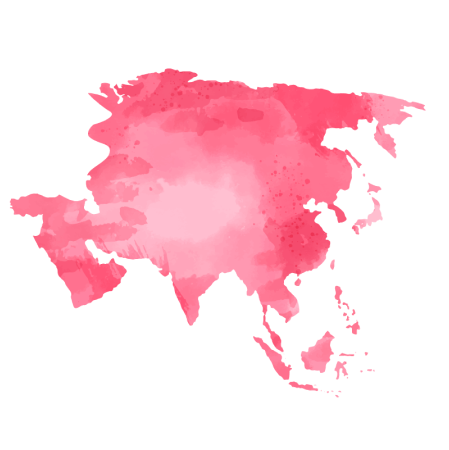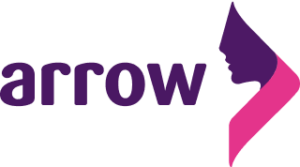Asia and the Pacific

Learn more about the data-driven advocacy work of EM2030 partner, ARROW, and about the Asia and the Pacific region's performance in the SDG Gender Index.
Asia-Pacific Resource and Research Centre for Women (ARROW), a regional non-profit women’s organization based in Kuala Lumpur, Malaysia, strives to enable women to be equal citizens in all aspects of their life by ensuring their sexual and reproductive health and rights are achieved.
Learn more about ARROW's data-driven advocacy work.
About gender equality in Asia and The Pacific :
2020 Index score: 67.7
2015 Index score: 65.5
Status: ‘Some progress’ since 2015 and ‘poor’ overall score

Key findings
With an average Index score of 67.7 (‘poor’), the Asia and the Pacific region has seen only some progress on gender equality.
With an average Index score of 67.7 (‘poor’), the Asia and the Pacific region has seen only ‘some progress’ on gender equality with an increase of 2.2 points since 2015. Countries like Nepal (+6 points), Tajikistan (+5) and Cambodia (+5) have led this progress, while Afghanistan (-2) has moved in the ‘wrong direction.’
Despite strong overall economic growth, the region has continued to grapple with poverty. An estimated 400 million people were living in extreme poverty in 2019 – two-thirds women – which is likely to increase due to the COVID-19 pandemic. Climate change and a lack of basic infrastructure and services also constrain progress in this large and diverse region.
Characterised by dramatic intra-regional gaps, Asia and the Pacific has a 73-point gap between the highest- and lowest-scoring countries on SDG 4 on education, and a 60-point gap on SDG 5 on gender equality.
On SDG 1 on poverty, 16 of 26 countries in the region score over 80 points (‘good’) in the Index for 2020. While Nepal (+13 points) and Lao PDR (+9) have shown ‘fast progress’ since 2015, high-scoring Japan and Singapore have made ‘no progress’. Afghanistan and Pakistan remain the lowest-scoring countries on this goal, due to decreased scores on women’s perceptions of household income (Ind. 1.4), and for Afghanistan on the proportion of the population living below the national poverty line (Ind. 1.1).
The regional score for SDG 9 on innovation has improved by 9 points – driven by an increase in women’s access to the internet (Ind. 9.3) and their greater use of digital banking (Ind. 9.1), even though the digital gender gap in the region remains substantial. Meanwhile, on SDG 2 on nutrition, the prevalence of anaemia in women (Ind. 2.3) remains a challenge, alongside food insecurity amongst women (Ind. 2.2). Afghanistan (55 points) and Thailand (74 points) each dropped 11 points on SDG 2 overall since 2015, and even the best countries in the region scored lower in 2020 than in 2015.
The four of the five countries with the highest scores in the region saw ‘some progress’ between 2015 and 2020. They are: New Zealand, Australia, Singapore, and South Korea. Japan (ranked 4th) saw ‘no progress’. The five lowest-scoring countries in 2020, from lowest to highest, were Afghanistan, Pakistan, Bangladesh, and Iran.
Reflections from the Asian-Pacific Resource and Research Centre for Women (ARROW)
The 2022 SDG Gender Index shows that, while the Asia and Pacific region has made progress in some areas, significant inequality persists for women and girls in all their diversity. Notably, progress in the region on SDG 5 on gender equality (+1.7 points in the Index) has been slower than the global average (+4.1 points) between 2015 and 2020. Progress towards ensuring sexual and reproductive health is particularly critical; women’s access to safe and legal abortion is as relevant to gender equality as women’s equal access to education, employment, adequate food and housing.
SDG 3 on health recognizes that differences in health outcomes are driven by social determinants such as gender roles, access to information and resources, and lack of agency. SDG 3 also calls for a reduction in maternal mortality, but progress has been uneven in the region: while the regional average ratio saw no progress overall between 2015 and 2020, countries including Indonesia, the Philippines and India still have maternal mortality ratios greater than 70.
Of all unsafe abortions occurring globally, more than half occur in Asia, mostly in South and Central Asia. Lack of access to safe and legal abortions and contraceptives is a leading reason for the region’s high maternal mortality ratio. Even with the right laws and policies in place, access to safe abortion services is a challenge. For example, in Nepal and India – the two countries with comparatively liberal abortion laws in South Asia – access to safe and legal abortion remains limited. A new law in India expands access to abortion by raising the gestation limit for abortion from 20 to 24 weeks and removing marital status as a limitation for abortion. Yet the law continues to deny women’s agency and leaves the final say to the doctors. Sexual and reproductive health and rights are linked to the overall well-being of an individual; pushback on sexual and reproductive health and rights needs to be seen as an overall pushback on the gender equality agenda within the SDGs.
